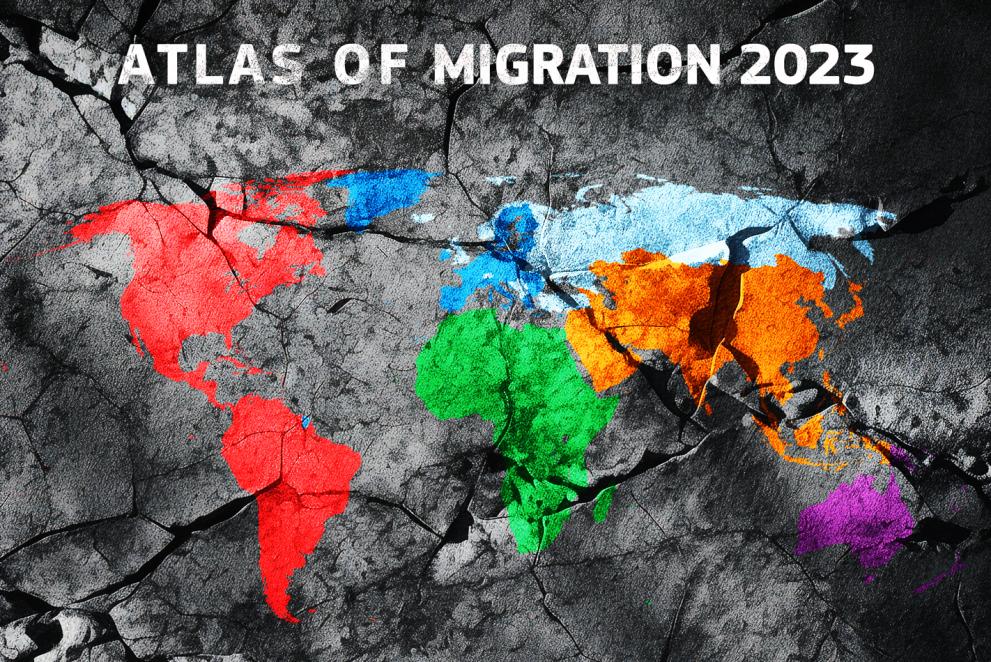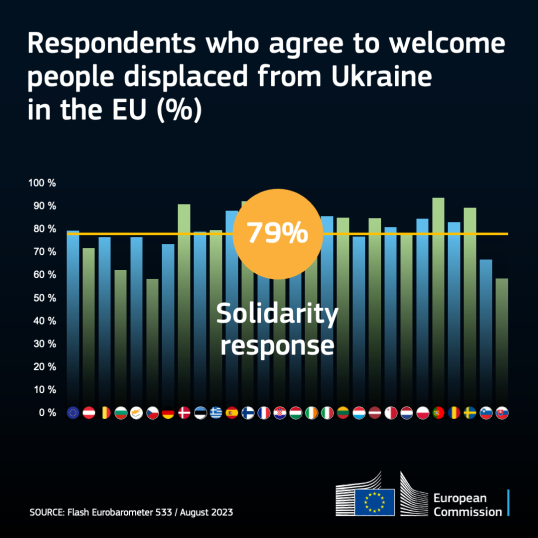
On International Migrants Day 2023, the European Commission’s Knowledge Centre on Migration and Demography has released the latest edition of the Atlas of Migration. This online tool provides the latest available data on migration trends worldwide, displayed in user-friendly interactive charts and visualisations.
This new edition includes a special thematic section that sheds light on the trends in solidarity among Europeans, towards people displaced from Ukraine. It offers insights into the evolving perceptions and responses of Europeans towards those seeking refuge in the EU.
In particular, the thematic section shows that one and a half years after the start of the war (February 2022), the support of Europeans for people displaced from Ukraine remains high.
Source: Flash Eurobarometer 506; Flash Eurobarometer 533
In August 2023, a large majority of respondents to a Eurobarometer survey (up to 79%) still supported the idea of welcoming people fleeing the war in the EU.
A tool that contributes to informed decision-making
With migration becoming an increasingly prominent global issue, the Atlas is a valuable tool to help navigate its complexities. It offers a wealth of information on migration patterns - and how these evolve over time - allowing users to gain a pragmatic perspective of the current situation in human mobility.
The Atlas includes data on the social inclusion and integration of third country nationals, thus providing insights into related challenges and opportunities – essential for effective migration management.
The Atlas of Migration reveals migration dynamics at global level, taking several variables into account. This approach translates into a balanced and holistic portrayal of migration trends, which can help EU and Member States’ decision-makers to formulate evidence-based policies. The Atlas is also a valuable source of data-based information for journalists.
The Atlas of Migration: a user-friendly overview of key migration facts and figures
The Atlas of Migration is an interactive online tool, containing the latest available data on migration in the 27 EU Member States and 171 non-EU countries and territories. A new edition is released each year.
It consolidates into a single database harmonised and validated data from official, international sources, including Eurostat. Users can explore this data through country-specific profiles. Overviews for continent and sub-continental regions are also available.
The Atlas displays the data in interactive visualisations including graphs, charts and maps that are accompanied by brief introductory summaries.
Explore the Atlas of Migration for the most up-to-date, comprehensive and accurate data and information on key migration topics, including:
- the number of people who have migrated, their country of origin and country of destination
- the reasons why people migrate (e.g. for work, to join their families, for education purposes)
- the number of people who applied for asylum or temporary protection in the EU and the outcome of their applications
- remittances, development and humanitarian assistance the EU has granted to non-EU countries
- migrant integration across EU Member States
- demographic characteristics of different countries
Sources
Details
- Publication date
- 18 December 2023
- Author
- Joint Research Centre
- JRC portfolios





